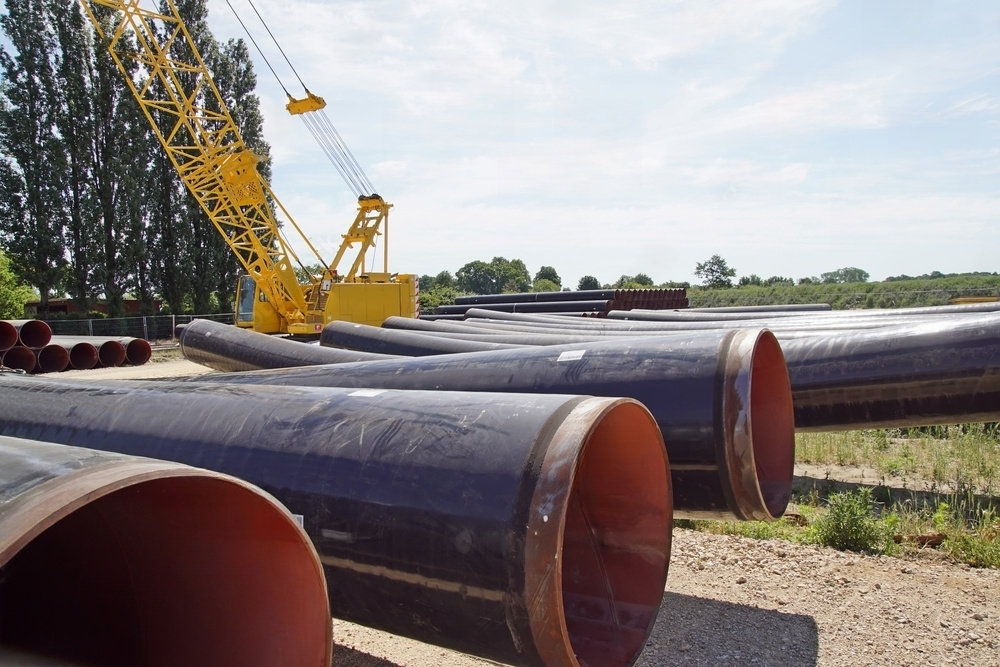OCTG, “Oil Country Tubular Goods,” are essential parts of the oil and gas industry. When it comes to the exploration, production, and transportation of oil and gas resources, Oil Country Tubular Goods (OCTG) are an absolute necessity. These tubular products are built to withstand harsh conditions in the oil and gas industry.
This facilitates the extraction of hydrocarbons from extremely deep within the earth’s crust in a safe and effective manner. In this blog, we will walk you through the world of OCTG, examining its fundamental components, the process by which it is manufactured, and its significance in the industry.
Understanding OCTG
The acronym OCTG refers to various tubular products that can be either welded or seamless and are used in the extraction and transportation of oil and gas. These products are typically manufactured out of carbon or alloy steel, and they are designed to be able to withstand the harsh conditions that are encountered during drilling and production operations.
tubing, Casing, and drill pipes are the three primary different types that fall under the umbrella of OCTG.
Casing Pipe
Casing pipes cover the wellbore’s inside and shape the well. They keep the well from collapsing and protect it from pressure from the outside. They also make it easier to get oil and gas from the well. A wide range of casing pipes is available on the market, each of which comes in a distinct set of dimensions and qualities.
Tubing Pipe
Inside the casing pipes are tubing pipes, which transport oil and gas to the well. They bring fluids that have been taken out of the reservoir to the surface. Tubing pipes are smaller in diameter than casing pipes, and they have to deal with pressure and fluids that eat away at them. They are made to handle high temperatures, high pressures, and corrosive environments.
Drill Pipe
To drill, you need to drill pipes. During drilling, drill pipes rotate the drill bit and circulate drilling fluids. These pipes transmit torque, axial tension, and drilling fluid to penetrate the earth’s layers efficiently. Drill pipe is subjected to high mechanical stresses and must have exceptional strength and durability.
Specifications of OCTG
Different industry standards and specifications are used to make OCTG pipes. API 5CT, the standard for OCTG, is set by the American Petroleum Institute (API). These standards say how big OCTG pipes should be, their mechanical properties, and how they should be tested.
Manufacturing Process Of OCTG
Several critical steps are involved in the production of OCTG. First, raw materials, primarily steel, are carefully selected for their strength, pipeline corrosion resistance, and other mechanical properties.
The steel is then heated and formed into hollow tubes via a seamless or welded process. A seamless pipe is formed by piercing a solid steel billet to form a hollow shell, whereas welded pipes are formed by rolling and welding a flat steel plate.
The pipes are then subjected to heat treatment processes such as quenching and tempering to improve their mechanical properties. This ensures that the OCTG can withstand the high pressures, temperatures, and corrosive environments common in oil and gas operations.
The pipes are inspected following heat treatment to meet industry standards and customer specifications. Non-destructive testing techniques such as ultrasonic and electromagnetic inspection methods are used to identify defects or anomalies.
Materials Used in OCTG
Most OCTG pipes are made of carbon steel or alloy steel, which are strong, don’t rust, and last long. The type of steel used depends on the well’s conditions, such as its depth, temperature, pressure, and the presence of substances that cause various types of pipeline corrosion.
Importance of OCTG in Industry
The oil and gas industry relies completely on OCTG. Casing pipes are critical for maintaining a well’s structural integrity, preventing it from collapsing due to pressure exerted by surrounding rocks and preventing fluid migration between formations.
Tubing is a conduit for transporting oil or gas from the reservoir to the surface, ensuring efficient production. It is also a conduit for chemical injection, gas lift, and other well-operational processes.
Drill pipes are critical for drilling because they transfer torque and drilling fluid to the drill bit. To effectively penetrate through various rock layers, they must withstand enormous stress and torsion forces.
OCTG’s key characteristics are dependability and durability. Failure of these tubular products can result in severe consequences such as well blowouts, environmental damage, and production loss. To ensure the integrity and safety of OCTG, stringent quality control measures, such as material selection, manufacturing processes, and testing, are implemented.
Application Of OCTG
OCTG products are used in many different ways at different stages of oil and gas operations:
Exploration and Drilling: The casing and drill pipe are essential. The casing keeps the well from collapsing and gives it structural integrity. The drill pipe moves drilling fluid and rotates the drill bit.
Production and Completion: Tubing moves oil or gas from the wellbore to the surface during production. It also makes putting downhole tools like pumps, packers, and control devices in place easier.
Well, Intervention and Workover: OCTG is used to repair, stimulate, or maintain existing wells during well intervention and workover activities. People often use coiled tubing, a long piece of tubing wound around a reel.
Offshore Operations: OCTG products are made to withstand high pressures and corrosive conditions, common in harsh offshore environments. They are used for offshore drilling, production platforms, and pipelines that go under the water.
Connection of OCTG Pipes
OCTG pipes are threaded on both ends for simple installation and connection. The two most common types of pipe connections are:
API Connections: These connections are API-compliant and widely used in the industry. API Regular, API External-Upset, and API Integral-Joint connections are among them.
Premium Connections: Premium connections offer improved sealing, pressure resistance, and fatigue strength. These connections are intended for use in harsh environments and critical applications.
Market Trends and Challenges
Several factors influence the OCTG market. Oil and gas price fluctuations, geopolitical dynamics, and technological advancements in drilling techniques impact OCTG demand.
Furthermore, environmental regulations and a greater emphasis on renewable energy sources have resulted in a more cautious investment approach in the oil and gas industry.
The OCTG industry faces challenges such as sourcing high-quality raw materials, managing production costs, and adhering to stringent safety and environmental regulations.
The industry must also continue to innovate to improve the performance and lifespan of OCTG under extreme operating conditions.
Conclusion
Oil Country Tubular Goods (OCTG) are critical components of the oil and gas industry, playing vital roles in drilling, completion, and production operations. Understanding the various OCTG types, manufacturing processes, and applications is critical for industry professionals and individuals.
OCTG products are used at various oil and gas industry stages, including exploration, drilling, production, completion, and healthy intervention. Because of their strength and durability, they are also suitable for offshore operations.
Understanding OCTG and its significance allows stakeholders to make informed decisions about its use, thereby contributing to the efficient and safe extraction of oil and gas resources.





